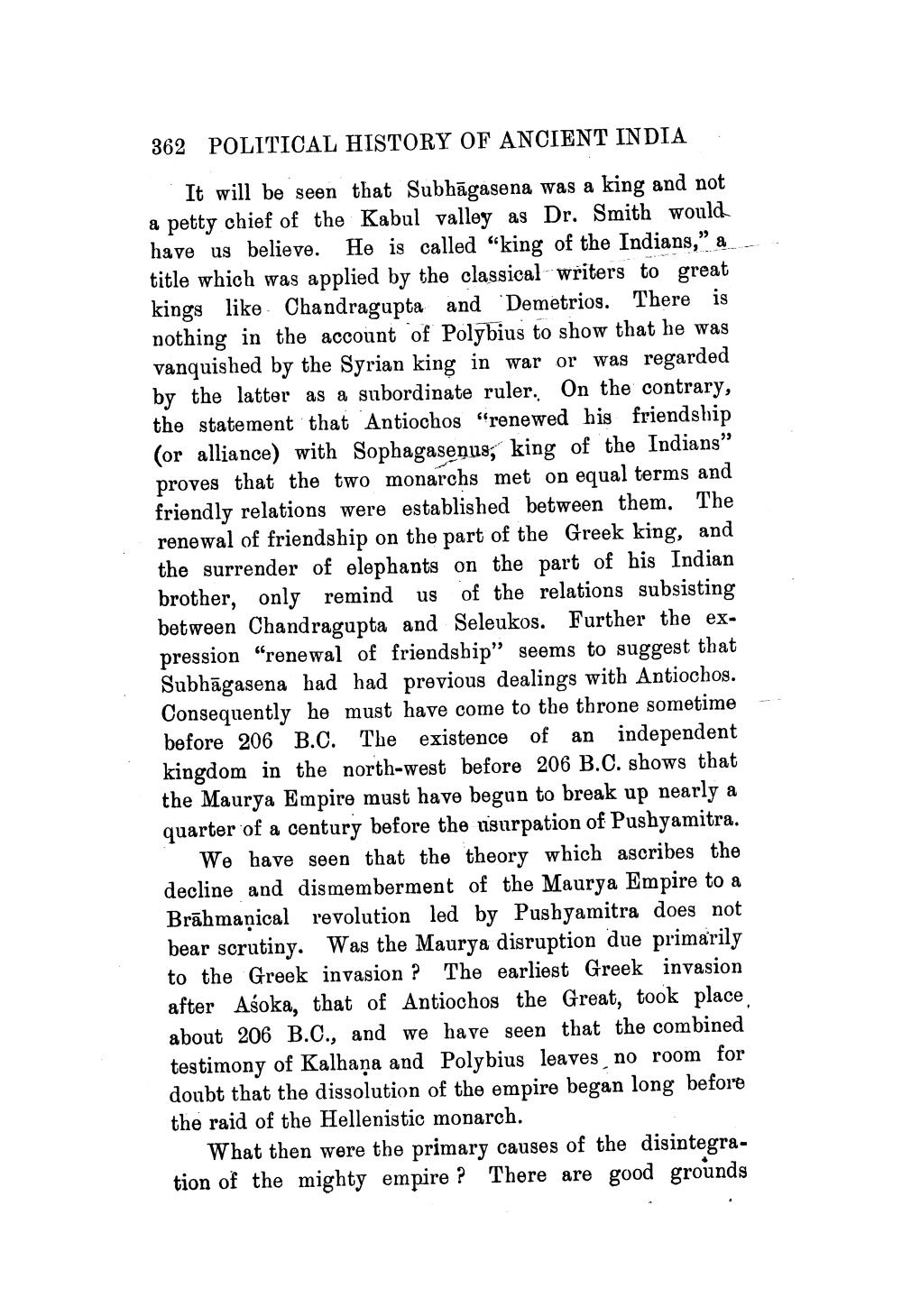________________
362 POLITICAL HISTORY OF ANCIENT INDIA
It will be seen that Subhagasena was a king and not a petty chief of the Kabul valley as Dr. Smith would have us believe. He is called "king of the Indians," a title which was applied by the classical writers to great kings like Chandragupta and Demetrios. There is nothing in the account of Polybius to show that he was vanquished by the Syrian king in war or was regarded by the latter as a subordinate ruler. On the contrary, the statement that Antiochos "renewed his friendship (or alliance) with Sophagasenus, king of the Indians" proves that the two monarchs met on equal terms and friendly relations were established between them. The renewal of friendship on the part of the Greek king, and the surrender of elephants on the part of his Indian brother, only remind of the relations subsisting between Chandragupta and Seleukos. Further the expression "renewal of friendship" seems to suggest that Subhāgasena had had previous dealings with Antiochos. Consequently he must have come to the throne sometime before 206 B.C. The existence of an independent kingdom in the north-west before 206 B.C. shows that the Maurya Empire must have begun to break up nearly a quarter of a century before the usurpation of Pushyamitra.
us
We have seen that the theory which ascribes the decline and dismemberment of the Maurya Empire to a Brāhmaṇical revolution led by Pushyamitra does not bear scrutiny. Was the Maurya disruption due primarily to the Greek invasion? The earliest Greek invasion after Aśoka, that of Antiochos the Great, took place. about 206 B.C., and we have seen that the combined testimony of Kalhana and Polybius leaves no room for doubt that the dissolution of the empire began long before the raid of the Hellenistic monarch.
What then were the primary causes of the disintegration of the mighty empire? There are good grounds




